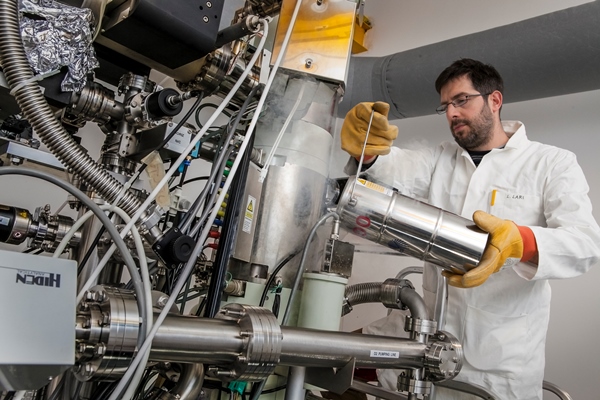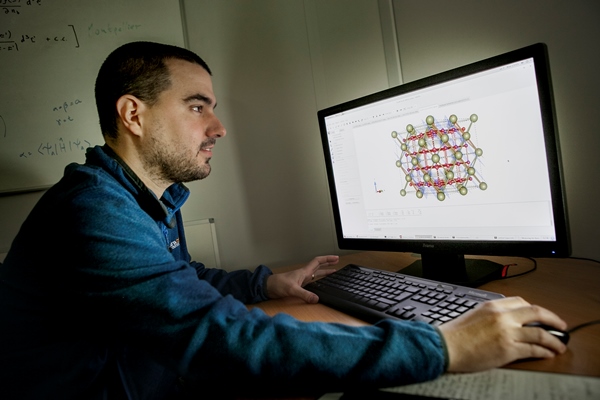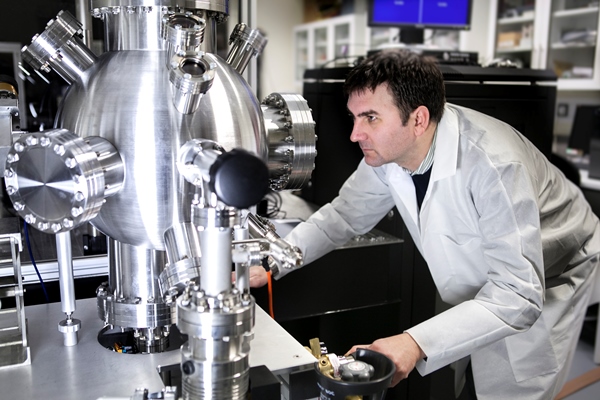Facilities
Characterisation
We employ a wide range of techniques to probe the structure, properties and functionality of materials.
These include state-of-the-art microscopes that can resolve the structure of materials down to the atomic scale (e.g. aberration-corrected scanning transmission electron microscopy and scanning probe microscopy), methods to probe optical and electronic properties (X-ray photoelectron, nuclear magnetic resonance and metastable de-excitation spectroscopies) and tools to resolve the chemical reactivity and photo-electrochemical properties of materials.

One of our researchers preparing the JEOL 2200 FS aberration corrected scanning transmission electron microscope for imaging of materials at the atomic level.
Predictive modelling
We employ predictive materials modelling approaches covering a range of time and length scales. These include finite element and atomistic level methods as well as fully quantum mechanical approaches.
These methods are able to predict materials facilitating direct comparison with experiment to validate models and provide deeper insight. With modern predictive quantum mechanical methods we are also able to screen materials computationally and guide materials synthesis. Many of our members are active in method development giving us the flexibility to modify codes as required. We also benefit from access to the national supercomputing facility (Archer) as well as local and regional supercomputers for our computational research.

One of our researchers performing predictive first principles calculations of the structure and properties of metal oxides for applications in electronics.
Materials synthesis
With precise control over structure and composition we are able to synthesise many types of advanced functional materials.
These include nanostructured materials (such as thin films and nanoparticles), liquids as well as molecules. We have in-house facilities for physical deposition of materials (including pulsed laser deposition, molecular beam epitaxy and sputtering), nanostructuring of materials (e.g. electron-beam lithography) as well as a wide range of wet chemistry techniques (including robotic platforms for high-throughput synthesis).

One of our researchers growing novel multiferroic materials using pulsed laser deposition.
